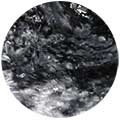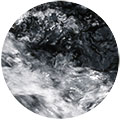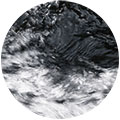The path of reality is a non-path, because it is above all an exploration of life in its wholeness, where we dare afresh, without falling back on our models and our repetitive, comfortable pat-terns. It’s a non-path because it always appears here and now. We recognize in real time how we negotiate with reality, how we cling to a belief or to our need for control, and how this outlook keeps us from being in tune with the moment and creates our suffering.
The path of reality does not require us to conform to any model, because it is not attached to what we do, think or feel. It invites us to see how we behave with our opinions, our emotions, and with living beings.
Are we aware of what is happening?
Are we here, now?
Are we real?
The path of reality is more than anything a path of selfknowledge, not in the psychological sense but in the most essential and profound sense there is. It helps us rediscover our absolute aspect while incorporating it into the most human part of us, until there is no more opposition at all between the two. It brings us back to the roots of our being, making a complete humanity possible.
The path of reality does not require us to conform to any model, because it is not attached to what we do, think or feel. It invites us to see how we behave with our opinions, our emotions, and with living beings.
Are we aware of what is happening?
Are we here, now?
Are we real?
The path of reality is more than anything a path of selfknowledge, not in the psychological sense but in the most essential and profound sense there is. It helps us rediscover our absolute aspect while incorporating it into the most human part of us, until there is no more opposition at all between the two. It brings us back to the roots of our being, making a complete humanity possible.
Honesty
We take the risk of being authentic no matter what the situation, even if it is confronting, even if we risk losing face. We question ourselves frequently, to see if we aren’t protecting ourselves by playing a role or by pretending to be someone else instead of being sincere. We dare to look at what is happening inside us, what we feel and what we think. Honesty is the hardest thing to practice, even though it is very simple, because it requires us to face and not twist reality to serve our own interest. Without honesty, it is impossible to regain unity with reality, so it is essential that honesty become the main orientation of our life.
We take the risk of being authentic no matter what the situation, even if it is confronting, even if we risk losing face. We question ourselves frequently, to see if we aren’t protecting ourselves by playing a role or by pretending to be someone else instead of being sincere. We dare to look at what is happening inside us, what we feel and what we think. Honesty is the hardest thing to practice, even though it is very simple, because it requires us to face and not twist reality to serve our own interest. Without honesty, it is impossible to regain unity with reality, so it is essential that honesty become the main orientation of our life.
Wholeness in daily life
Reality is one. We do all we can not to create any division between our spiritual aspirations and our ordinary daily life. We experience non-separation in nature, in the city, in the kitchen, at the office or on our meditation seat. All this without neglecting our relationships with those close to us, with our neighbours or our colleagues, since it is these everyday things which often confront us and make it possible for our practice to stabilize and gain in depth.
Spirituality is not limited to intense and ecstatic experiences, which tend to addict us and turn our search for truth toward serving the ego and its insatiable desire for unusual experiences. Thus our deepest spiritual understanding has to be integrated into all realms of life.
Presence
We train ourselves to act, walk and speak while remaining in contact with the overall sensation of the body. We fully inhabit the body no matter what its position. We try to keep our vertical axis, which passes through the body from the pelvic basin to the crown of the head, supple and alive. We allow our attention, which is too often focused and grasping, to open and relax, so it can reach down to the foundation of our being and establish itself there.
I don’t know
We develop the mind of the beginner, who doesn’t know and who is always willing to discover and learn from life. This is an inner quality of innocence and freshness; we are interested in all aspects of reality, without preconceived notions. Here, listening comes before all else! We are open and available to whatever happens, both inside and out, because we have no self-image to defend. The beginner pays attention to every detail, learning that the most profound lessons are sometimes found in the simplest and most ordinary things. Keeping our mind in the lightness and openness of “I don’t know” lets us not take ourselves seriously, while remaining sincerely involved in everything we do, think and feel.
Involvement
If we feel a resonance with the way and its teachings, we commit ourselves to putting them into practice in every act, every word, every thought, to the best of our ability, without making a performance of it and without blaming ourselves when it is not possible. We recognize our resistance and we dare to face it, trying not to get rid of it, but to know it, down to its most intimate core. We commit to letting no darkness or difficulty keep us from going deeper into ourselves. We’re willing not to let any ego-based subterfuge turn us away from the truth.
Experiment
These teachings are not a new belief system to conform to, and it is essential not to take them as such, nor to restrict ourselves to a purely conceptual understanding of them. Doing either of these would mean hopelessly missing the point of what the teachings offer. We need to experience for ourselves what they set out, without ever abdicating our own authority — even though it is important to give ourselves over to the teachings completely if a real transformation is to come about. Intuition, which is an indispensable guide on the return journey to the self, can very quickly be deformed and obscured by even the least dogmatic ideology. It is essential to keep from drifting off this way.
The practices are concrete ways of applying the teachings.
Meditation
This is the simplest and most radical practice. We develop a quality of presence which makes it possible to go deep within ourselves, to the root of our being. We learn to let ourselves be as we are, not to intervene, and stay silent inside, no matter what comes up. We remain attentive to the moment, relaxed and listening, without going into a hypnotic trance. During teaching workshops, meditations are sometimes guided so as to help us dive into the depth and silence of our true nature. No techniques are offered, since the point is to refrain from action and rest in oneself, in a state of total receptivity.
Sensation - Internal yoga *
Based on the Kashmiri Shaivist yogas and Qi Gong, the physical exercises are accessible and simple technically, since their aim is first and foremost to bring us back into contact with the reality of the body. Often this reality is simply a welter of resistances, reactions and fears which show themselves in a chronic state of tissue contraction. Energy circulation is blocked and the body becomes heavy and rigid. It loses its vibratory quality and its ability to radiate out into space. Such a conditioned body is unable to realize its non-separation from reality.
These explorations allow us to observe our tendency towards controlled and repetitive movement as it arises, as well as our tendency to force or limit our physical motions. They help us to recover a fluid, vibrant body in effortless harmony with the moment.
* Internal yoga is an active meditation in which body and mind enter into harmony. The burden of mental activity is set down and we enter into the pure experience of sensation. We are of one body with the present moment. This yoga makes it possible for us to integrate the teaching profoundly and concretely, and so transpose it into daily life.
Breathing
When we become aware of the breath, both in the physical sense and on the level of energy, taking care we don’t start viewing it as a kind of control or performance, we can gradually clear out the resistances which disturb its harmony and breadth. Breath work has profound effects, dissolving mental activity, calming emotional agitation and facilitating return to the ground of being. Workshops commonly include simple explorations of breathing which can be applied in various situations of daily life.
Walking
Different kinds of walk, essentially as taught in Dao Yin Qi Gong and in La Gymnastique Sensorielle, are brought in for developing the perception and sensations of verticality, rooted-ness, balance and the linear axes. The various stages of walking are explored with awareness, because this fundamental action brings to light the way we move. Too often this is hurried and automatic.
In this dynamic meditation, we learn to harmonize breathing and walking so that the two form a single motion and the mind can rest in silence.
Enquiry
We observe everything that bothers us, in both sensation and thought, so as to become aware of the mental and emotional patterns that restrict us. As soon as we’re upset, even a little, we ask ourselves “What’s real? Am I sure of what I know or believe about this situation? Could reality be showing me the truth? Is my attachment to a belief generating suffering?” This isn’t a mental exercise. We question our emotional habits and our beliefs but we don’t let the dis-cursive mind reply — the answers come from deeper in our being. We have to be honest and brave for this practice. We’re prepared to question our certainties, even the most fundamental one, which is that we are individual entities. The practice has us living in a state of constant discovery, because we never consider anything to be certain or final.
The Practice of Stopping
All through the day there are spaces between things, empty of thought and action. We don’t pay attention to them because they are too elusive. The practice is to seize the invitation as it comes, not postpone it, and dive into these intervals of pure silence; to let ourselves fall into our own interior with no holding back. It requires great acuity and complete absence of hesi-tation. It’s like jumping off into space with absolute confidence. We let ourselves melt into the substance of the moment, to experience our unity with it in real time. This practice is very easy to bring into daily life, using environmental sounds as points of entry into the intervals.
Meditation
This is the simplest and most radical practice. We develop a quality of presence which makes it possible to go deep within ourselves, to the root of our being. We learn to let ourselves be as we are, not to intervene, and stay silent inside, no matter what comes up. We remain attentive to the moment, relaxed and listening, without going into a hypnotic trance. During teaching workshops, meditations are sometimes guided so as to help us dive into the depth and silence of our true nature. No techniques are offered, since the point is to refrain from action and rest in oneself, in a state of total receptivity.
Sensation - Internal yoga *
Based on the Kashmiri Shaivist yogas and Qi Gong, the physical exercises are accessible and simple technically, since their aim is first and foremost to bring us back into contact with the reality of the body. Often this reality is simply a welter of resistances, reactions and fears which show themselves in a chronic state of tissue contraction. Energy circulation is blocked and the body becomes heavy and rigid. It loses its vibratory quality and its ability to radiate out into space. Such a conditioned body is unable to realize its non-separation from reality.
These explorations allow us to observe our tendency towards controlled and repetitive movement as it arises, as well as our tendency to force or limit our physical motions. They help us to recover a fluid, vibrant body in effortless harmony with the moment.
* Internal yoga is an active meditation in which body and mind enter into harmony. The burden of mental activity is set down and we enter into the pure experience of sensation. We are of one body with the present moment. This yoga makes it possible for us to integrate the teaching profoundly and concretely, and so transpose it into daily life.
Breathing
When we become aware of the breath, both in the physical sense and on the level of energy, taking care we don’t start viewing it as a kind of control or performance, we can gradually clear out the resistances which disturb its harmony and breadth. Breath work has profound effects, dissolving mental activity, calming emotional agitation and facilitating return to the ground of being. Workshops commonly include simple explorations of breathing which can be applied in various situations of daily life.
Walking
Different kinds of walk, essentially as taught in Dao Yin Qi Gong and in La Gymnastique Sensorielle, are brought in for developing the perception and sensations of verticality, rooted-ness, balance and the linear axes. The various stages of walking are explored with awareness, because this fundamental action brings to light the way we move. Too often this is hurried and automatic.
In this dynamic meditation, we learn to harmonize breathing and walking so that the two form a single motion and the mind can rest in silence.
Enquiry
We observe everything that bothers us, in both sensation and thought, so as to become aware of the mental and emotional patterns that restrict us. As soon as we’re upset, even a little, we ask ourselves “What’s real? Am I sure of what I know or believe about this situation? Could reality be showing me the truth? Is my attachment to a belief generating suffering?” This isn’t a mental exercise. We question our emotional habits and our beliefs but we don’t let the dis-cursive mind reply — the answers come from deeper in our being. We have to be honest and brave for this practice. We’re prepared to question our certainties, even the most fundamental one, which is that we are individual entities. The practice has us living in a state of constant discovery, because we never consider anything to be certain or final.
The Practice of Stopping
All through the day there are spaces between things, empty of thought and action. We don’t pay attention to them because they are too elusive. The practice is to seize the invitation as it comes, not postpone it, and dive into these intervals of pure silence; to let ourselves fall into our own interior with no holding back. It requires great acuity and complete absence of hesi-tation. It’s like jumping off into space with absolute confidence. We let ourselves melt into the substance of the moment, to experience our unity with it in real time. This practice is very easy to bring into daily life, using environmental sounds as points of entry into the intervals.


